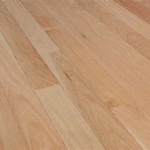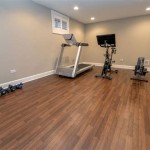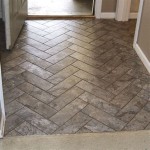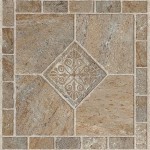Best Flooring for a Laundry Mud Room
The laundry mud room, often a hybrid space serving as both a transitional zone from the outdoors and a dedicated area for washing and drying clothes, demands a flooring solution that is both durable and aesthetically pleasing. This area is frequently subjected to moisture, dirt, heavy foot traffic, and potential spills of detergents and cleaning agents. Selecting the appropriate flooring material is crucial for creating a functional, safe, and visually appealing space that can withstand the rigors of daily use.
The ideal flooring for a laundry mud room should exhibit several key characteristics. It needs to be waterproof or highly water-resistant to prevent damage from spills and leaks. Resistance to staining is also essential, considering the potential for discoloration from mud, dirt, and laundry products. Durability is paramount, as the flooring must withstand heavy foot traffic and the weight of appliances. Furthermore, the flooring should be easy to clean and maintain, requiring minimal effort to keep the space looking its best. Finally, the aesthetic appeal of the flooring contributes to the overall ambiance of the room, complementing the design and creating a welcoming atmosphere.
Key Considerations for Choosing Laundry Mud Room Flooring
Before opting for a specific flooring type, several factors warrant careful consideration. Budget is a significant constraint for many homeowners, and the cost of materials and installation can vary considerably between different options. The existing subfloor also plays a crucial role. Some types of flooring require a perfectly level and stable subfloor, while others are more forgiving of imperfections. The overall design aesthetic of the home should also be taken into account, ensuring that the flooring choice complements the existing style and color palette. Finally, the level of maintenance required for each type of flooring should be evaluated, considering the homeowner's lifestyle and willingness to invest time in cleaning and upkeep.
The durability of the flooring directly impacts its lifespan and long-term cost-effectiveness. Flooring materials that are resistant to scratches, dents, and fading will maintain their appearance for a longer period, reducing the need for frequent replacements. The ease of cleaning and maintenance is also crucial for a laundry mud room, where spills and messes are common occurrences. Flooring options that are simple to wipe clean and require minimal upkeep will save time and effort in the long run. Furthermore, the comfort level of the flooring should be considered, especially if the laundry mud room is a space where time is spent performing household chores. Flooring options that offer cushioning or warmth underfoot can enhance the comfort and usability of the room.
The potential for moisture exposure is a primary concern in laundry mud rooms. Washing machines and sinks are prone to leaks and overflows, and moisture tracked in from the outdoors can also damage flooring materials that are not adequately waterproof or water-resistant. Selecting a flooring option that can withstand moisture without warping, cracking, or fostering mold growth is essential for preventing costly repairs and maintaining a healthy indoor environment. Consider also the potential for sound dampening. Laundry appliances, especially washing machines, can generate significant noise. Choosing a flooring material with sound-absorbing properties can help to reduce noise levels and create a more peaceful environment.
Popular Flooring Options for Laundry Mud Rooms
Several flooring options are well-suited for laundry mud rooms, each offering its own set of advantages and disadvantages. These options include tile, vinyl, laminate, concrete, and rubber flooring. The best choice for a particular laundry mud room will depend on the homeowner's specific needs, budget, and aesthetic preferences.
Tile Flooring: Tile is a popular choice for laundry mud rooms due to its exceptional durability, water resistance, and wide range of styles and colors. Tile is virtually impervious to water damage, making it an ideal choice for areas prone to spills and leaks. It is also highly resistant to scratches, stains, and fading, ensuring that it will maintain its appearance for many years. Tile is relatively easy to clean and maintain, requiring only occasional sweeping and mopping. However, tile can be cold and hard underfoot, which may be a concern for some homeowners. Additionally, tile installation can be labor-intensive and may require professional assistance.
There are several types of tile available, each with its own characteristics. Ceramic tile is a popular and affordable option, offering a wide range of styles and colors. Porcelain tile is denser and more durable than ceramic tile, making it a better choice for high-traffic areas. Natural stone tile, such as slate or granite, offers a unique and luxurious look but can be more expensive and require more maintenance. When selecting tile for a laundry mud room, it is important to choose a tile with a slip-resistant surface to prevent falls, especially when the floor is wet.
Vinyl Flooring: Vinyl flooring is another popular choice for laundry mud rooms, offering a balance of affordability, durability, and water resistance. Vinyl is available in a variety of forms, including sheet vinyl, vinyl tile, and luxury vinyl planks (LVP). Sheet vinyl offers seamless protection against moisture, making it an excellent choice for preventing water damage. Vinyl tile is available in a wide range of styles and colors, allowing for customization and design flexibility. LVP offers the look of hardwood or stone with the added benefits of water resistance and durability. Vinyl is relatively easy to install, especially peel-and-stick vinyl tiles, making it a popular choice for DIY projects. It is also comfortable underfoot, offering a softer and warmer alternative to tile. However, vinyl is not as durable as tile and can be susceptible to scratches and dents. It is also important to choose a high-quality vinyl product to ensure its longevity and resistance to wear and tear.
The specific type of vinyl to be chosen can vary depending on the overall goals. Luxury vinyl plank, for example, offers impressive durability and is relatively easy to install, making it a popular choice. Sheet vinyl, meanwhile, is excellent for preventing leaks because it is often installed in a continuous sheet with minimal seams.
Laminate Flooring: Laminate flooring is a cost-effective alternative to hardwood and stone, offering a realistic look at a fraction of the price. Laminate is relatively durable and resistant to scratches and stains, making it a suitable choice for laundry mud rooms. It is also easy to install, with many products featuring a click-lock system that eliminates the need for glue or nails. However, laminate is not as water-resistant as tile or vinyl, and it can be damaged by prolonged exposure to moisture. It is important to choose a laminate product that is specifically designed for use in damp environments and to take precautions to prevent spills and leaks from seeping into the seams. Additionally, laminate can be slippery when wet, so it is important to choose a product with a slip-resistant surface.
Laminate flooring has improved significantly in recent years, with many products now offering enhanced water resistance and durability. However, it is still important to be mindful of potential water damage and to take steps to prevent spills and leaks from penetrating the flooring. Laminate is a good option for homeowners who want the look of hardwood or stone at a more affordable price point, but it is important to weigh the pros and cons carefully before making a decision.
Concrete Flooring: Concrete flooring offers a modern and industrial aesthetic, and it is an extremely durable and long-lasting option for laundry mud rooms. Concrete is resistant to water, scratches, and stains, making it a practical choice for high-traffic areas. It can be stained, polished, or sealed to create a variety of looks and finishes. Concrete is also relatively easy to clean and maintain, requiring only occasional sweeping and mopping. However, concrete can be cold and hard underfoot, which may be a concern for some homeowners. It is also important to seal concrete properly to prevent moisture from seeping into the surface and causing damage. Concrete installation can be labor-intensive and may require professional assistance.
While concrete is incredibly durable, it is also important to understand that it can be porous. A proper sealer is crucial to prevent staining and water absorption. Given the potential for spills in a laundry mud room, the sealer is a worthwhile investment to protect the concrete.
Rubber Flooring: Rubber flooring is a resilient and comfortable option for laundry mud rooms, offering excellent shock absorption and slip resistance. Rubber is resistant to water, stains, and scratches, making it a practical choice for high-traffic areas. It is also easy to clean and maintain, requiring only occasional sweeping and mopping. Rubber flooring is available in a variety of colors and styles, including interlocking tiles and rolled sheets. However, rubber flooring can be more expensive than other options, and it may not be the most aesthetically pleasing choice for some homeowners. It is also important to choose a high-quality rubber product to ensure its longevity and resistance to wear and tear.
Factors Affecting Installation Costs
The cost of installing laundry mud room flooring can vary widely depending on the type of flooring chosen, the size of the room, and the complexity of the installation. Tile installation is generally more expensive than vinyl or laminate installation due to the labor-intensive nature of the process. Concrete and rubber flooring installation can also be costly, especially if specialized equipment or techniques are required. The condition of the existing subfloor can also affect installation costs, as repairs or leveling may be necessary before installing the new flooring. Hiring a professional installer will typically add to the overall cost, but it can ensure that the flooring is installed correctly and that any potential problems are addressed before they become major issues.
The location of the laundry mud room within the home can also affect installation costs. If the room is located in a basement or other difficult-to-access area, the cost of transporting materials and equipment may be higher. Additionally, if the existing flooring needs to be removed, the cost of disposal may also be a factor. Before making a final decision on flooring, it is important to obtain quotes from several different installers and to factor in all potential costs, including materials, labor, and disposal fees.
The preparation of the subfloor is as important for achieving success as the flooring material itself. A properly prepared subfloor will ensure that the flooring is level, stable, and free from moisture. If the subfloor is uneven or damaged, it may need to be repaired or leveled before the new flooring can be installed. This can add to the overall cost of the project, but it is essential for ensuring the long-term performance and durability of the flooring.

Laundry Room Flooring Guide Carpet One Floor Home

15 Gorgeous Laundry Room Mudroom Ideas

Pretty Mudrooms Designs That Stand Up To Real Life

The Best Flooring For Your Laundry Room And Remodel Ideas Twenty Oak

Grey And Blue Mudroom The Lilypad Cottage

What Flooring Type Is Best For A Laundry Room America

Get A Mudroom Floor That S Strong And Beautiful Too

Laundry Room Floor Tile Porcelain More The Shop

Laundry Mudroom Combos That Get It Right Kristina Lynne

Laundry Room Flooring Guide Carpet One Floor Home








